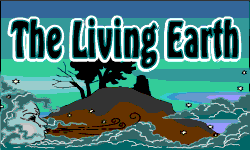The Living Earth
Created | Updated Dec 11, 2002

In my Living Earth page over the past few months, I have been trying to bring you some of the natural events from around the world that shape our planet, and in general I have steered clear of man-made disasters and environmental management issues, because there are
plenty of other groups looking at this, and these areas probably deserve a good study in their own right. However, in November I broke this rule somewhat, because of the devastating impact that a man-made disaster had, and continues to have, on the Spanish and Portuguese coastlines. I refer of course, to the Prestige tanker disaster in early November. The Prestige, an outmoded single-hulled tanker, got into trouble off the coast of Spain during a major storm. Its hull was ruptured, threatening the leakage of 77,000 metric tons of oil from its cargo holds. Subsequently the Prestige broke in two and sank around 200 kilometres off the Spanish coast. To date, only a proportion (17,000 tons) of the full cargo has leaked, but the environmental consequences are already devastating enough. 179 Spanish beaches have been blackened, and the slick now threatens the Portuguese coastline.
It is a real shame that we still allow single hulled tankers to ply our oceans, given the fact that tanker break-ups occur with a depressing familiarity. The Exxon Valdez disaster in 1989 should have been enough to urge the world into real action, but no, in the intervening years we have had, not one, but three, major oil disasters, all of which actually threatened to spill more oil than the tanker in Alaska. Putting people in jail does nothing to help the millions of sea birds, plants and animals that are killed by these disasters of horrific proportions.
November also saw the strongest quake to hit the planet so far this year. It was a magnitude 7.9 earthquake, and it hit the Denali National Park in Alaska. It forced a temporary shutdown of the Trans-Alaska pipeline, causing a 7 metre displacement in places. As earthquakes go, it was on a par with the 1906 San Francisco earthquake, and even bigger than the devastating quake that hit Turkey some 3 years ago. The difference with those quakes however, is that few people live in Alaska, so no casualties were reported. Although it's very cold and quite inaccessible, it's a geologists dream.
In early November, we had a volcano near Quito, in Equador. The Reventador volcano erupted, sending a grey sulphuric cloud descending on the nation's capital. The volcano's plume rose seven kilometres into the sky, and Equator's airport was closed for some days.
Just when you think it is safe to go outside, freak weather kicks you back indoors. That is what happened to some unfortunate residents of the US and Canada, when unseasonal weather patterns caused devastating tornados to appear along a line stretching from Alabama to Pennsylvania. Worst hit was the community of Mossy Grove in Tennessee, where over 7 people were killed by a massive tornado. Normally, tornados appear in the US during the spring and early summer months.
Although November was the occasion of the annual Leonids meteor showers (again a non-event in many parts of Europe, due to the weather) probably the strangest report this month came from altogether a different type of extraterrestrial impact - that of quark matter. Apparently, the universe is flooded with this stuff, and if it hits, even in teeny weenie quantities, it would pass straight through the planet, causing earthquakes to occur at the points of entry and departure. Some scientists claim that we might have been hit in 1993, but the evidence is still quite sparse, so other theories may also be valid.
Have a good Christmas, I'll talk to you in the New Year.
